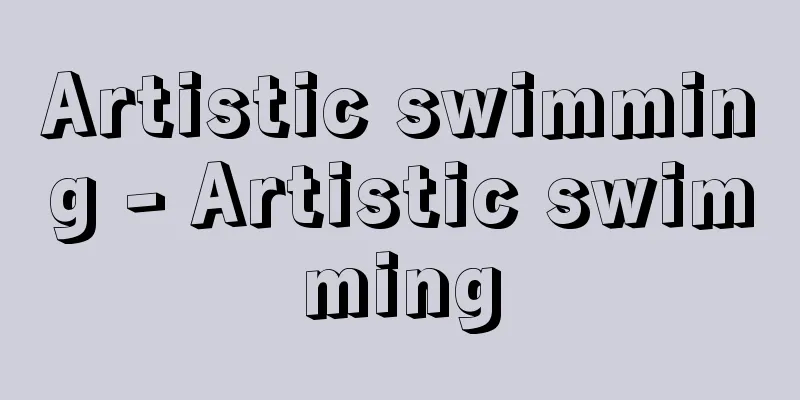Shiba Kokan - Shiba Kokan

|
A Western-style painter from the mid-Edo period. The theory that he was born in 1738 is a mistake, due to the misunderstanding that 9 years were added to his age in his later years. His real surname was Ando, and his given name was Kichijiro, and later he went by the names Nyufu, Katsusaburo, or Magodayu to the Tsuchida clan. In his youth, he was known as (Suzuki) Harushige as an ukiyo-e artist, and as Shotei Harushige for his hand-painted portraits of beautiful women, but from middle age onwards, in his Chinese and Western-style paintings he was known as Shiba, Shun, his pen name Kungaku, and the pen names Kokan and Shunparo, and in his later years he was known as Fugen, Mugon, Togen, and others. As a boy, he studied under the Edo Kano painters, but after his father's death he became a pupil of Suzuki Harunobu, where he was given the name Harunobu and devoted himself to ukiyo-e woodblock prints. He claims that he took advantage of Harunobu's sudden death in 1770 (Meiwa 7) to create a fake print, which no one could detect, but it is believed that this was a substitute print at the publisher's behest, or that he may have created the print after being recognized as the second Harunobu. He eventually left the world of ukiyo-e woodblock prints and studied Nanpin school sketch-and-print Chinese paintings under So Shiseki (Kusumoto Sekkei), while also producing many hand-painted portraits of beautiful women until around 1781 (Tenmei 1). Around 1780 (An'ei 9), influenced by Hiraga Gennai, a pioneer of Western studies, and under the guidance of Odano Naotake, a master of Akita Ranga, he turned to Western-style painting, and in 1783 (Tenmei 3) with the help of Otsuki Gentaku, he produced Japan's first etching (etched copperplate print). After that, he produced many copies of Western copperplate prints and copperplate prints of Japanese landscapes, and also mastered oil painting. In 1788, he traveled to Nagasaki, but the theory that he learned Western-style painting from the Dutch during that trip is incorrect. After returning to Edo, he produced many oil paintings of Japanese landscapes from the late 18th century to the early 19th century, and contributed to the spread of Western-style painting. He also began to work to popularize Western natural science around this time, writing works such as "A Rough Map of the Earth" (1793), "Transport to Holland" (1805), "A Guide to the Netherlands" (1796), and "Kopper's Astronomical Illustrations" (1808) to introduce the geography of all nations and the heliocentric theory, and published "Discussions on Western Painting" (1799) to advocate the superiority of realism in Western painting. In the New Year of 1808 (Bunka 5), at the age of 62, he added 9 years to his age, and thereafter claimed to have added 9 years to his age. In 1813, he distributed a false death notice, and in his later years, he engaged in many eccentric behaviors. However, in essays such as "Dokusho Mogen" (1810), "Shunpa-ro Hikki" and "Mugon Dojin Hikki" (1814), he expounded on his unique philosophy of life and made noteworthy achievements as a progressive thinker and essayist, discussing human equality and opening up the country. As Kokan was the most famous Western-style painter before the modern era, he is still mistakenly considered to be the founder of Western-style painting in Japan, and there are also many counterfeits bearing his seal. He died on October 21, 1820. [Fujio Naruse May 19, 2016] "Complete Collection of Japanese Art Paintings 25: Shiba Kokan" by Fujio Naruse (1977/Popular Edition, 1980, Shueisha) " ▽ "Shiba Kokan" by Masanobu Hosono (1974, Yomiuri Shimbun) [References] | | | | | | |Japan's first etching (corrosive copperplate print). The picture is reversed because it is meant to be viewed through a pair of peepholes after being reflected in a mirror. 1783 (Tenmei 3), held at the National Diet Library . Shiba Kokan's "Three Enclosed Scenes" The book that accompanies this map is "Earth Map Summary." Copperplate engraving by Shiba Kokan, circa 1796 (Kansei 8), owned by the National Diet Library . "The Earth Map" Source: Shogakukan Encyclopedia Nipponica About Encyclopedia Nipponica Information | Legend |
|
江戸中期の洋風画家。1738年生まれ説は、晩年の9歳加算年齢に惑わされた誤り。本姓安藤、名は吉次郎、のち土田氏に入夫(にゅうふ)、勝三郎または孫太夫といった。青年時代の浮世絵師としては(鈴木)春重(はるしげ)、肉筆美人画では蕭亭(しょうてい)春重と称したが、中年以降の漢画と洋風画では姓を司馬、名を峻(しゅん)、字(あざな)を君嶽(くんがく)、号を江漢、春波楼(しゅんぱろう)と称し、晩年には不言(ふげん)、無言(むごん)、桃言(とうげん)などと号した。 少年時代に江戸狩野(かのう)の画人に学んだが、父の死にあい鈴木春信(すずきはるのぶ)の門下に転じて、春重の名を与えられ浮世絵版画に従事。1770年(明和7)春信の急死に乗じ、その偽版をつくったところ、だれも見破る者がなかったと自称しているが、これは版元の命による代作であったと考えられ、あるいは2世春信として認められたうえでの制作であったかもしれない。やがて浮世絵版画界を去り、宋紫石(そうしせき)(楠本雪渓(くすもとせっけい))から南蘋(なんぴん)派の写生体漢画を学び、かたわら1781年(天明1)ごろまで肉筆美人画も多く描いた。1780年(安永9)前後、洋学の先駆者平賀源内の影響と秋田蘭画(らんが)の小田野直武(おだのなおたけ)の指導を受けて、洋風画に転向し、1783年(天明3)大槻玄沢(おおつきげんたく)の協力を得て、日本最初のエッチング(腐食銅版画)をつくった。以後は西洋銅版画の模刻と日本風景の銅版画を多く制作し、また油絵も習得した。1788年長崎に旅行したが、その際にオランダ人から洋画を学んだという説は誤りである。江戸に帰ってから、18世紀末より19世紀初頭にかけて、多数の油彩日本風景図を描き、洋風画の普及に尽くした。また、このころから西洋自然科学の普及に努め、『地球全図略説』(1793)『和蘭(オランダ)通舶』(1805)『和蘭天説』(1796)『刻白爾(コッペル)天文図解』(1808)などを著して万国地理や地動説を紹介し、『西洋画談』(1799)を出版して西洋画の写実の優秀性を説いた。 1808年(文化5)正月、62歳のとき年齢を9歳加え、以後は加算年齢を自称し、1813年に偽って死亡通知を配付するなど、晩年は奇行が多かったが、『独笑妄言(どくしょうもうげん)』(1810)『春波楼筆記』『無言道人筆記』(1814)などの随筆により、独特の人生哲学を説き、人間の平等や開国について論ずるなど、進歩的思想家や随筆文学者として注目すべき業績をあげた。江漢は、近代以前のもっとも有名な洋風画家なので、いまだに誤って日本洋画の開祖とされることがあり、また彼の款印を入れた偽物も非常に多い。文政(ぶんせい)元年10月21日没。 [成瀬不二雄 2016年5月19日] 『成瀬不二雄著『日本美術絵画全集25 司馬江漢』(1977/普及版・1980・集英社)』▽『細野正信著『司馬江漢』(1974・読売新聞社)』 [参照項目] | | | | | | |日本最初のエッチング(腐食銅版画)。鏡に写して覗き眼鏡で鑑賞する眼鏡絵のため、左右が逆に描かれている。1783年(天明3)国立国会図書館所蔵"> 司馬江漢『三囲景』 本図の解説書が『地球全図略説』である。司馬江漢写・刻 銅版 1796年(寛政)8ころ国立国会図書館所蔵"> 『地球全図』 出典 小学館 日本大百科全書(ニッポニカ)日本大百科全書(ニッポニカ)について 情報 | 凡例 |
Recommend
Razin's Rebellion - Razin's Rebellion
A peasant revolt that occurred in Russia in 1670-7...
Punch - Ponchi (English spelling) punch
(1) A type of scribing tool. It is a round or pol...
Competition design
In addition to the above drawings, architectural ...
Hilbert space
Around 1900, German mathematician Hilbert propose...
Minnesota Multiphasic Personality Inventory
MMPI is a questionnaire-based personality test pu...
Fifth Republic (English spelling)
The political system of France from June 1958 to ...
Auditory hallucinations
〘 noun 〙 A sensory disorder in which sounds and vo...
Agam, Y.
...From the late 1950s, a major movement in kinet...
Phoenicopteridae
…any bird of the family Phoenicopteridae, order C...
Mixed chancre
Chancroid is a mixed infection of chancroid and s...
Japanese beetle (Popillia japonica)
An insect (illustration) of the family Scarabaeida...
Mishima
An island in the Sea of Japan, 45 km northwest ...
Gaberones - Gaberones
Former name of Gaborone, the capital of the Republ...
Frank, T. (English spelling) FrankT
...The use of natural science methods from the la...
Palmchats (palm birds) - palmchats (English spelling)
A passerine bird of the family Pelopidae. This fam...









